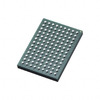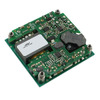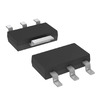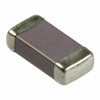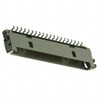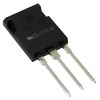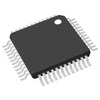LM338 Regulator: Pinout, Circuit, and Alternatives
This article explores the LM338 voltage regulator, celebrated for its versatility and robust performance across a variety of electronic applications. It provides adjustable output voltage and supports loads up to 5 amperes for a wide range of technical projects. Here, we delve into the LM338's features, its practical applications, and the technical specifics that underpin its widespread admiration and use.Catalog
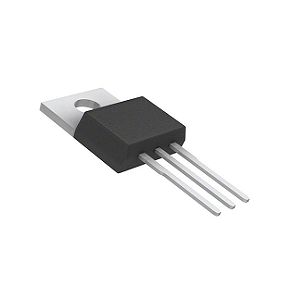
What is the LM338 Voltage Regulator?
The LM338 emerges as a multifaceted three-terminal positive voltage regulator, housed conveniently in a TO-220 package. Its primary purpose is to deliver a consistent, adjustable output voltage between 1.2V and 32V DC. It functions optimally with an input capacity reaching up to 40V and is frequently deployed in environments that demand precise voltage stabilization. The operational principle mandates maintaining an input voltage consistently 2-3V higher than the desired output level. For example, to achieve stable 5V output, a minimum input of 7V is required, providing robustness during input fluctuations. This consideration holds in scenarios utilizing battery-operated devices or variable load power supplies.
The LM338 possesses the capability to deliver current outputs of up to 5A, making it a preferred option in circumstances where the LM317's current limitations become apparent. It becomes beneficial for high-current requirements in power amplifiers and high-power LED applications. A compelling trait of this regulator is its minimal need for external components, only two capacitors and two resistors are required, enabling precise output voltage adjustments. Calculating the necessary resistor values can be conveniently done using online tools, ensuring accuracy and efficiency across various electronic applications.
LM338 Pin Configuration

|
PIN |
I/O |
DESCRIPTION |
||
|
NAME |
TO-220 |
TO-CAN |
||
|
ADJ |
1 |
1 |
I |
Output voltage adjustment pin. Connect to a resistor
divider to set V_O |
|
VIN |
3 |
2 |
I |
Supply input pin |
|
VOUT |
2 |
Case |
O |
Voltage output pin |
LM338 Symbol, Footprint, and CAD Model


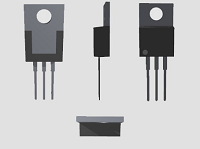
Features of the LM338
Output Current Capabilities
The LM338 stands out due to its ability to deliver a steady output current of up to 5A, with peaks reaching 7A. This makes it a robust choice for varied demanding applications, ensuring continuous and reliable power. Many have valued this ability to perform under continuous load, finding it reassuring in scenarios where performance must remain unfaltering.
Adjustable Output Voltage Range
The LM338 offers a flexible voltage range, adjustable from 1.2V to 32V, catering to diverse application demands. This adaptability allows for precise voltage tuning, greatly admired in customized electronic designs. Pondering over the potential applications that can benefit from this range often inspires its use in creative endeavors, such as bespoke power units or systems requiring variable voltage control.
Protective Safeguards
The component features essential safeguards, including short-circuit protection and thermal shutdown, which enhance its safety and lifespan. These mechanisms act as deterrents against adverse conditions, shielding the circuitry from unforeseen anomalies. In environments where circuit stability is under frequent trial, these protective features have served as shields to protect investments with confidence.
Design Simplicity
Encased in a TO-220 package, the LM338 necessitates minimal external components, needing just two resistors for output adjustment. This straightforward design reduces the complexity of its application and cuts costs for both commercial and personal projects. Others have often lauded this seamless integration, which simplifies the process while preserving full functionality.
Compliance and Reliability Aspects
Adherence to RoHS3 standards highlights the LM338's dedication to environmental safety, while its assured thermal regulation and consistent current limits signify reliability. Multiple projects have reaped the rewards of these assurances, offering insights into the influence of advanced regulations on product development timelines and market accessibility. As the drive for environmentally friendly electronics progresses, such compliance aligns eco-consciousness with dependable industry-grade solutions.
LM338 Technical Specifications
Technical specifications, characteristics, and parameters of the Texas Instruments LM338, along with components that match or closely resemble the specifications of the LM338T/NOPB.
|
Type |
Parameter |
|
Lifecycle Status |
ACTIVE (Last Updated: 3 days ago) |
|
Contact Plating |
Tin |
|
Mounting Type |
Through Hole |
|
Number of Pins |
3 |
|
Operating Temperature |
0°C~125°C |
|
JESD-609 Code |
e3 |
|
Part Status |
Active |
|
Number of Terminations |
3 |
|
ECCN Code |
EAR99 |
|
Max Power Dissipation |
25W |
|
Number of Functions |
1 |
|
Current Rating |
5A |
|
Pin Count |
3 |
|
Output Voltage |
37V |
|
Max Output Current |
5A |
|
Min Supply Voltage |
3V |
|
Factory Lead Time |
6 Weeks |
|
Mount |
Through Hole |
|
Package / Case |
TO-220-3 |
|
Weight |
2.298097g |
|
Packaging |
Tube |
|
Pbfree Code |
yes |
|
Moisture Sensitivity Level (MSL) |
1 (Unlimited) |
|
Termination |
Through Hole |
|
Power Rating |
25W |
|
Terminal Position |
SINGLE |
|
Terminal Pitch |
2.54mm |
|
Base Part Number |
LM338 |
|
Number of Outputs |
1 |
|
Output Type |
Adjustable |
|
Max Supply Voltage |
40V |
|
Output Configuration |
Positive |
|
Power Dissipation |
25W |
|
Max Output Voltage |
37V |
|
Min Input Voltage |
4.2V |
|
PSRR |
75dB ~ 60dB (120Hz) |
|
Dropout Voltage |
3mV |
|
Min Output Voltage |
1.2V |
|
Load Regulation-Max(%) |
1% |
|
Height |
4.7mm |
|
Width |
10.16mm |
|
REACH SVHC |
No SVHC |
|
RoHS Status |
ROHS3 Compliant |
|
Quiescent Current |
3mA |
|
Voltage - Output (Min/Fixed) |
1.24V |
|
Protection Features |
Over Temperature, Short Circuit |
|
Reference Voltage |
1.29V |
|
Dropout Voltage1-Nom |
2.7V |
|
Power Supply Rejection Ratio (PSRR) |
75dB |
|
Line Regulation-Max (%) |
0.08% |
|
Length |
14.988mm |
|
Thickness |
4.572mm |
|
Radiation Hardening |
No |
|
Lead Free |
Lead Free |
LM338 Alternatives and Equivalents
|
Part Number |
Description |
Manufacturer |
|
LM338N-1 |
2.2W, 1 CHANNEL, AUDIO AMPLIFIER, PDIP14 |
Texas Instruments |
|
NJM386M-(T1) |
Audio Amplifier, 0.5W, 1 Channel(s), 1 Func, Bipolar,
PDSO8, DMP-8 |
New Japan Radio Co Ltd |
|
NJM386M-(T2) |
Audio Amplifier, 0.5W, 1 Channel(s), 1 Func, Bipolar,
PDSO8, DMP-8 |
New Japan Radio Co Ltd |
|
NJM386M-(TE2) |
Audio Amplifier, 0.5W, 1 Channel(s), 1 Func, Bipolar,
PDSO8, DMP-8 |
New Japan Radio Co Ltd |
|
NJM386M-(TE1) |
Audio Amplifier, 0.5W, 1 Channel(s), 1 Func, Bipolar,
PDSO8, DMP-8 |
New Japan Radio Co Ltd |
|
NJM386M-(TE3) |
Audio Amplifier, 0.5W, 1 Channel(s), 1 Func, Bipolar,
PDSO8, DMP-8 |
New Japan Radio Co Ltd |
|
NJM386M-(TE4) |
Audio Amplifier, 0.5W, 1 Channel(s), 1 Func, Bipolar,
PDSO8, DMP-8 |
New Japan Radio Co Ltd |
|
LM338T/NOPB |
TO-220-3, Max Output Current 5 A, Min Input Voltage 4.2
V, Min Output Voltage 1.2 V, Dropout Voltage 3 mV |
Texas Instruments |
|
LM317BTG |
TO-220-3, Max Output Current 500 mA, Min Input Voltage
4.2 V, Min Output Voltage 1.2 V, Dropout Voltage 2.1 V |
ON Semiconductor |
|
LM217T |
TO-220-3, Max Output Current 400 mA, Min Input Voltage
4.2 V, Min Output Voltage 1.2 V, Dropout Voltage 1.95 V |
STMicroelectronics |
|
LM317TG |
TO-220-3, Max Output Current 400 mA, Min Input Voltage
4.2 V, Min Output Voltage 1.2 V, Dropout Voltage 2.25 V |
ON Semiconductor |
|
LM317MBTG |
TO-220-3, Max Output Current 1.5 A, Min Input Voltage 4.2
V, Min Output Voltage 1.2 V, Dropout Voltage - |
ON Semiconductor |
Functional Diagram of LM338

LM338 Layout Design
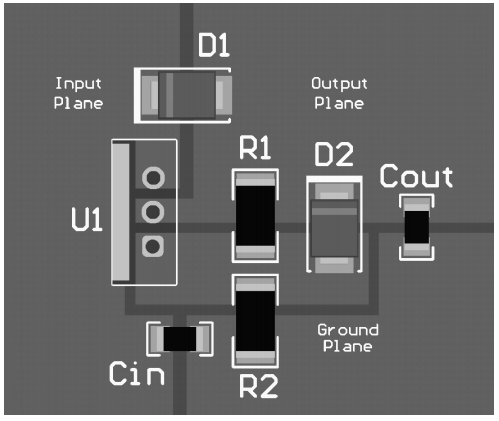
Circuits of the LM338


Applications of the LM338
Commercial and Educational Power Supplies
The integration of the LM338 in commercial and educational settings is driven by its adeptness at flexible voltage regulation, playing a role in electronic laboratories and classrooms. These power supplies offer a dependable energy source, nurturing the budding curiosity of young minds in classrooms and refining the precision required in electronic lab settings. In commercial environments, they serve to elevate equipment performance with unwavering voltage delivery, subtly reinforcing the commitment to quality that underpins successful operational outcomes.
Laboratory Power Equipment
Laboratory settings thrive on precision and stability in power sources when conducting intricate experiments or testing electronic circuits. The LM338, with its unwavering voltage output, stands as a main component in these demanding scenarios. Researchers find satisfaction in the small voltage adjustments made possible by the LM338, knowing these tweaks can catalyze groundbreaking results, thereby supporting the spirit of innovation and discovery.
Voltage Step-Down Circuits
Adapting higher voltage levels to be compatible with delicate electronic components is a delicate task, where voltage step-down circuits become important. The LM338 shines brightly in these applications, ensuring seamless voltage reduction and safeguarding components from potential harm due to voltage irregularities. Particularly in industrial automation, where equipment reliability lies at the heart of operations, these features gain even greater significance.
Battery Chargers
In efficient battery charger design, the LM338 offers customizable output tailored to various battery types. Its prowess in regulating charging currents and voltages directly influences the extension of battery life and performance. Harnessing the LM338 can elevate a standard charger to one that optimizes charging, ultimately prolonging the lifecycle of the device.
Solar Power Solutions
As renewable energy gains traction, the role of the LM338 in solar power solutions becomes more pronounced. It assists in converting and stabilizing voltage sourced from solar panels, contributing to the enhancement of solar system efficiency and reliability. With renewable energy emerging as a nod to sustainable futures, the LM338’s flexibility and resilience in balancing fluctuating solar outputs support this transition toward sustainable solutions.
Microcontroller Setups
Precise voltage levels are important in microcontroller setups to ensure seamless performance. The LM338 rises to this challenge by providing adaptable power supply solutions to meet diverse microcontroller needs. Whether in prototyping stages or final projects, its versatility stands out.
DC-DC Converters
Serving as a robust element within DC-DC converters, the LM338 facilitates transitions between differing technologies with minimal energy expenditure. This capability becomes use in complex systems where conserving efficiency and reducing thermal impact is needed. Integrating the LM338 optimizes operational processes, reflected in cost savings and bolstered system performance.
Portable Instruments
In the design of portable instruments, the balance of weight, size, and power efficiency is of utmost consideration. The LM338 fits seamlessly into this balance, offering compact, efficient voltage regulation suited to portable applications across various disciplines. From medical equipment to mobile testing devices, the LM338 ensures reliable functionality across an array of challenging environments.
Adjustable Power Supplies
The LM338 plays a role in developing adjustable power supplies tailored to specific application demands. These supplies prove invaluable in testing and development phases, providing with the freedom to explore the ideal operating conditions for a multitude of devices. Through a nuanced approach to power management, the LM338 aids in fostering a wide spectrum of technical innovations.
LM338 Packaging

LM338 Manufacturer Information
Texas Instruments stands out as a leading semiconductor firm, renowned for its cutting-edge development of analog chips and embedded processors. The company's product range, prominently featuring the widely appreciated LM338, highlights its influential role in the global semiconductor arena. With around 45,000 patents spanning the globe, TI’s unfaltering commitment to innovation glaringly showcases its technological prowess. Texas Instruments' remarkable legacy of innovation, combined with its contributions to technology advancement, anchors it as a pillar of the industry. The steadfast pursuit of excellence and tangible applications establishes an energetic atmosphere primed for ongoing triumph and evolution.
Datasheet PDF
LM317BTG Datasheets:
Material Declaration LM317BTG.pdf
Tube Shipping Chgs 26/Nov/2020.pdf
LM317/LM317L/LM317M 15/Mar/2021.pdf
LM217T Datasheets:
LM317TG Datasheets:
Cylindrical Battery Holders.pdf
Material Declaration LM317TG.pdf
Tube Shipping Chgs 26/Nov/2020.pdf
About us
ALLELCO LIMITED
Read more
Quick inquiry
Please send an inquiry, we will respond immediately.
Frequently Asked Questions [FAQ]
1. What is the difference between the LM138 chip and the LM338 chip? Are the parameters the same?
The LM138 and LM338 integrated circuits share many core performance traits but differ notably in their resistance to temperature variations. The LM138 is crafted to perform reliably over a wide temperature range from -55°C to 150°C, providing enhanced dependability in demanding conditions. The LM338, in contrast, operates effectively within 0°C to 125°C. This divergence highlights the necessity of choosing the right IC based on environmental context. In practical applications, being able to endure extreme temperatures can significantly affect the performance and lifespan of electronic systems.
2. What are the precautions for the use of LM338?
Heatsinking: To counter the substantial power dissipation, solid heatsinking is needed. This not only sustains device performance but also reduces potential degradation over time.
Capacitive Filtering: Employ large filter capacitors alongside smaller parallel ones to efficiently mitigate high-frequency noise. This is good for circuit stability, a lesson often learned, working with delicate electronics.
Output Load Handling: Direct connections of large capacitive loads to the output are ill-advised due to potential protection circuit complications. Others shows that using indirect connections or buffering can effectively manage these concerns.
3. What are the advantages and disadvantages of LM338 and LM317 as an adjustable power supply?
Current Capability: With a robust 5A current output, the LM338 is suited for high-power tasks, whereas the LM317 provides 1.5A, ideal for applications requiring less power.
Voltage Range: Although the LM317 provides a wider output voltage range of 1.2V to 37V, the LM338 adeptly handles needs within its 1.2V to 32V range, striking a precise balance for various regulatory purposes.
Input-Output Voltage Margin: The LM317 slightly excels with a higher maximum input-output voltage differential, offering a slight competitive edge in certain technical scenarios demanding high flexibility.
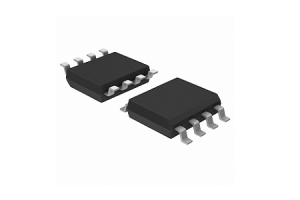
TJA1051 CAN Transceiver: Specifications, Equivalents, and Application Diagram
on November 6th
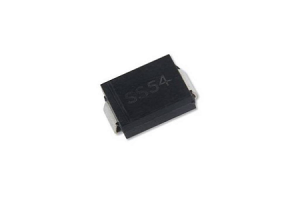
The SS54 Schottky Diode's 5A, 40V Capabilities in an SMA Package
on November 6th
Popular Posts
-

What is GND in the circuit?
on January 1th 2872
-

RJ-45 Connector Guide: RJ-45 Connector Color Codes, Wiring Schemes, R-J45 Applications, RJ-45 Datasheets
on January 1th 2450
-

Fiber Connector Types: SC Vs LC And LC Vs MTP
on January 1th 2046
-

Understanding Power Supply Voltages in Electronics VCC, VDD, VEE, VSS, and GND
on November 6th 1815
-

Comparison Between DB9 and RS232
on January 1th 1740
-

What Is An LR44 Battery?
Electricity, that ubiquitous force, quietly permeates every aspect of our daily lives, from trivial gadgets to life-threatening medical equipment, it plays a silent role. However, truly grasping this energy, especially how to store and efficiently output it, is no easy task. It is against this background that this article will focus on a type of coin cell battery that may seem insignificant on the...on January 1th 1695
-

Understanding the Fundamentals:Inductance Resistance, andCapacitance
In the intricate dance of electrical engineering, a trio of fundamental elements takes center stage: inductance, resistance, and capacitance. Each bears unique traits that dictate the dynamic rhythms of electronic circuits. Here, we embark on a journey to decipher the complexities of these components, to uncover their distinct roles and practical uses within the vast electrical orchestra. Inductan...on January 1th 1637
-

CR2430 Battery Comprehensive Guide: Specifications, Applications and Comparison to CR2032 Batteries
What is CR2430 battery ?Benefits of CR2430 BatteriesNormCR2430 Battery ApplicationsCR2430 EquivalentCR2430 VS CR2032Battery CR2430 SizeWhat to look for when buying the CR2430 and equivalentsData Sheet PDFFrequently Asked Questions Batteries are the heart of small electronic devices. Among the many types available, coin cells play a crucial role, commonly found in calculators, remote controls, and ...on January 1th 1509
-

What Is RF and Why Do We Use It?
Radio Frequency (RF) technology is a key part of modern wireless communication, enabling data transmission over long distances without physical connections. This article delves into the basics of RF, explaining how electromagnetic radiation (EMR) makes RF communication possible. We will explore the principles of EMR, the creation and control of RF signals, and their wide-ranging uses. The article ...on January 1th 1490
-

CR2450 vs CR2032: Can The Battery Be Used Instead?
Lithium manganese batteries do have some similarities with other lithium batteries. High energy density and long service life are the characteristics they have in common. This kind of battery has won the trust and favor of many consumers because of its unique safety. Expensive tech gadgets? Small appliances in our homes? Look around and you'll see them everywhere. Among these many lithium-manganes...on January 1th 1479







